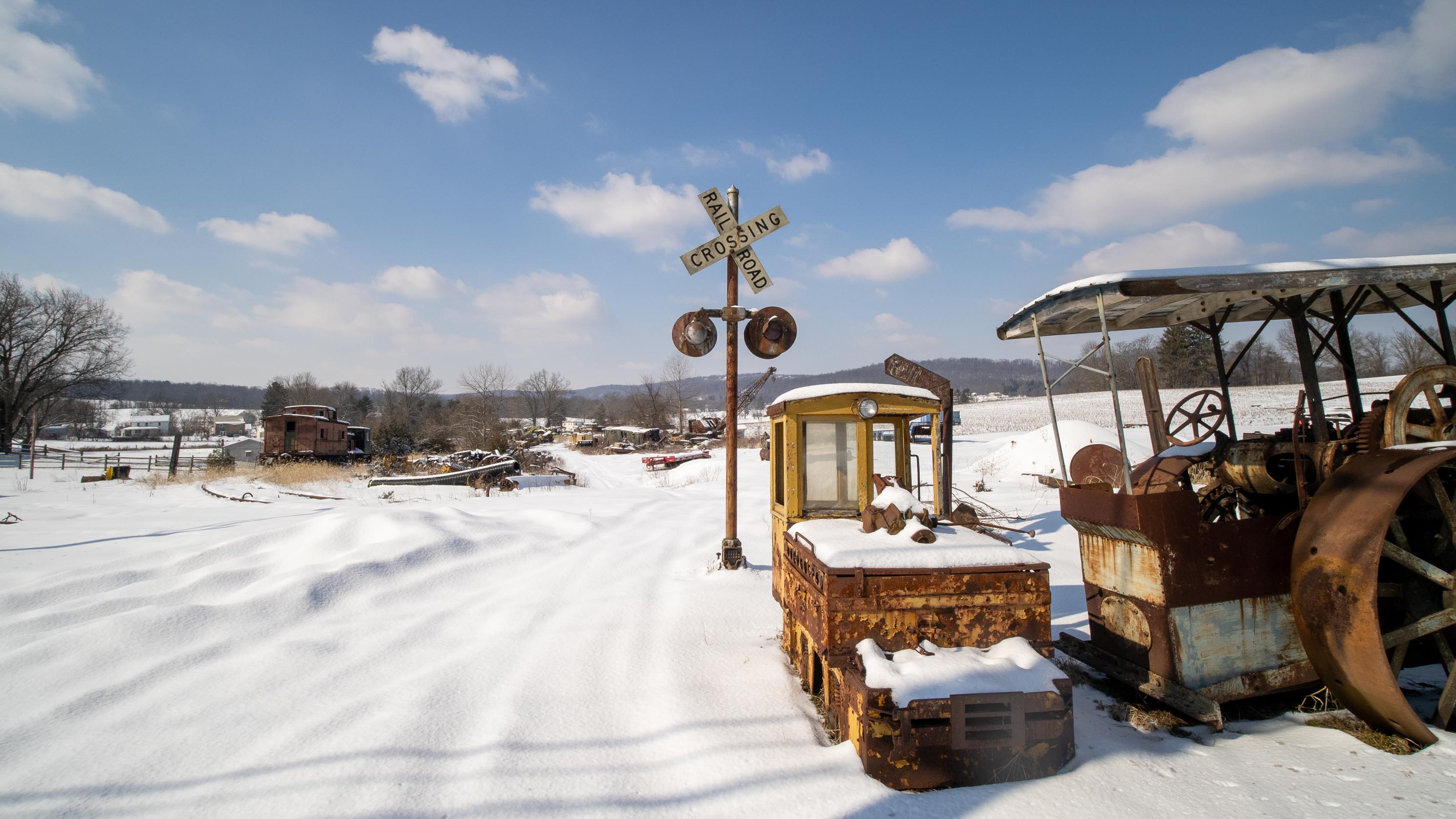James Buchanan's Birthplace
✍️ • 🕑 • Series: Attractions of Pennsylvania • Tags: State/Provincial Parks • U.S. Politics • American History • Places: James Buchanan Birthplace State Park
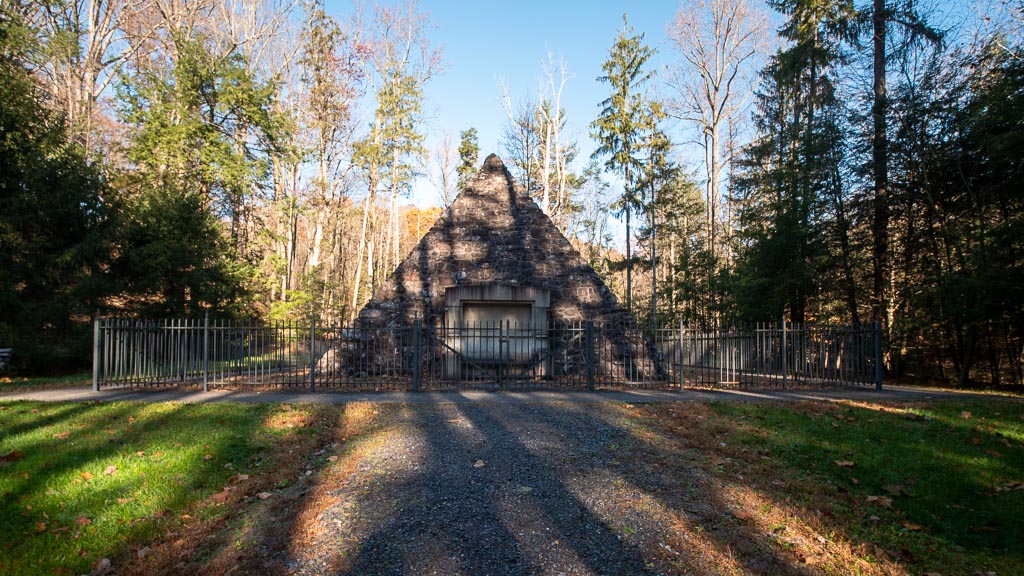
In the early days of November 2020, we were all subjected to a multi-day anxiety attack. Votes trickled in, but no one knew what would happen. We held our breath as states slowly changed color, and news anchors told us it was too close to call.
And then, rather unexpectedly, on Saturday November 7th – four days after Tuesday’s vote, Pennsylvania was officially called as a blue state. Joe Biden officially became the 46th President-elect of the United States.
The bar for Biden is rather low.
I cannot imagine that it will be challenging to be less divisive, and more responsible, respectful, and professional than Donald Trump.
I also cannot imagine that Biden will not be regarded as the best Pennsylvania-born president in history.
Up until now, there has only been one President whose birthplace was Pennsylvania.
Unfortunately for my home state, and for the nation, that man was James Buchanan.
I visited James Buchanan Birthplace State Park on Saturday. I will discuss the man and the place in this post.
James Buchanan: History and Legacy
James Buchanan was a lot of things. The park placards introduce him as having an “education and career of public service [that] shine[s] brightly when compared to other presidents,” possibly “second only to John Quincy Adams and Franklin D. Roosevelt.” 1
And sure, he was a lawyer. He spent five years as a Pennsylvania Assemblyman, a decade in the House of Representatives, two years as Minister to Russia, another decade as a Senator, four years as Secretary of State, and four years as Minister to Great Britain.
During that time, he also fostered grudges with other politicians, and formed a pretty narrow-minded view of how the law should operate.
As the State Park placards put it:
- “Only by compromise between parts could a federal republic survive”
- “Citizens had to obey the law even when they thought it unjust”
- “The question of morality could not be settled by political action”
Now, to contextualize those bullet points – Buchanan became President in 1857, during a period in which there was a lot of division in the United States.
The unjust laws, unsolved questions, and necessary compromises touted by Buchan’s philosophy, were a nice way of saying that the country needed to accept slavery.
Now, Pennsylvania did not allow slavery, and good ’ol Pennsylvania-born Buchanan ostensibly didn’t support it either.
But, if you’ve ever encountered any northerner decked out in confederate flag gear despite not even living in the South, then you’ve probably encountered someone not unlike Buchanan. He was pejoratively referred to as a “doughface” – a Northerner with Southern sympathies.
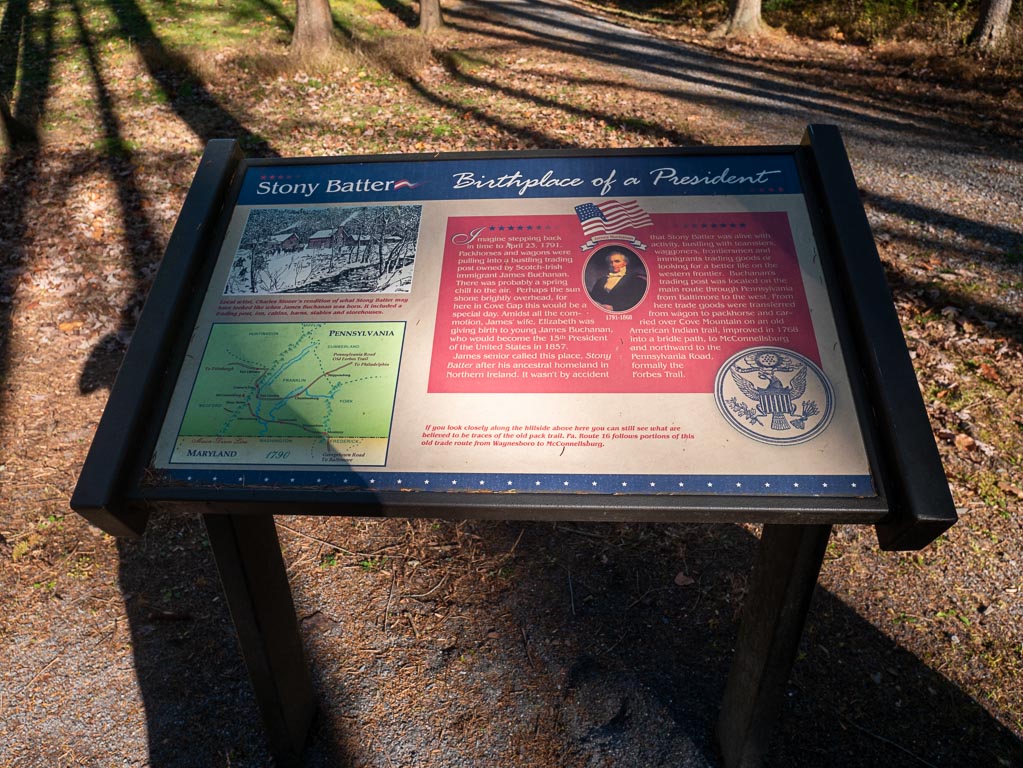
So what did Buchanan do as he became President during this tumultuous period in history?
- He personally pressured Supreme Court Justice Robert Cooper Grier (a Pennsylvanian) to side with Southerners in the court’s decision in Dred Scott v. Sandford.
- The decision? That black people are not and will never be citizens in the United States.
- Buchanan thought that this would put an end to strife in the country…
- During this period pro-slavery and anti-slavery settlers in the territory of Kansas were fighting.
- Buchanan appointed a pro-slavery governor.
- Buchanan decided to accept a pro-slavery constitution from Kansas after a rigged referendum. The House shot it down.
- Buchanan then pushed for another bill which would immediately give Kansas statehood and lots of land if it accepted the pro-slavery constitution. A referendum in Kansas strongly defeated it.
- Buchanan sent the army to Utah to deal with the Mormons, who he thought were likely to rebel. He considered buying Alaska from Russia as a place to put them, but couldn’t agree on an asking price.
When Abraham Lincoln was elected in 1860 and several southern states began to secede, Buchanan’s initial response was to call a constitutional convention to decide on the parameters of secession.
Buchanan also cancelled an order to send weapons to U.S. forts in the South. As fellow Pennsylvanian (and Radical Republican) Thaddeus Stevens put it, “It has been suggested that the President intentionally left those forts in a bad condition, that South Carolina might seize them before his successor had time to take means for their safety. I cannot believe it; I will not believe it, for it would make Mr. Buchanan a more odious traitor than Benedict Arnold. Every drop of blood that shall be shed in the conflict would sit heavy on his soul forever.”
As he retired to his estate in Wheatland, Buchanan is said to have told incoming President Lincoln, “Sir, if you are as happy in entering the White House as I shall feel on returning to Wheatland, you are a happy man indeed.”
I admit that this history is a bit condensed and unnuanced, but when it comes down to it, Buchanan was a complete and utter failure on moral issues of the day. He turned to his own preconceived pro-Southern notions instead of the desires of the majority of Americans, both in Kansas and across the country. He made decisions which served to increase division between North and South. Most importantly, he was utterly, utterly complicit in actively supporting the spread of slavery through weak words and poor actions.
His own final assessment:
“I feel that my duty has been faithfully, though it may be imperfectly, performed, and, whatever the result may be, I shall carry to my grave the consciousness that I at least meant well for my country.”
The Monument
And now, 159 years after he left the White House, I visited his birthplace, now James Buchanan Birthplace State Park in Franklin County, Pennsylvania.
It’s home to a monument where the log cabin of his birth once stood.
The monument itself is a weird, stone pyramid.
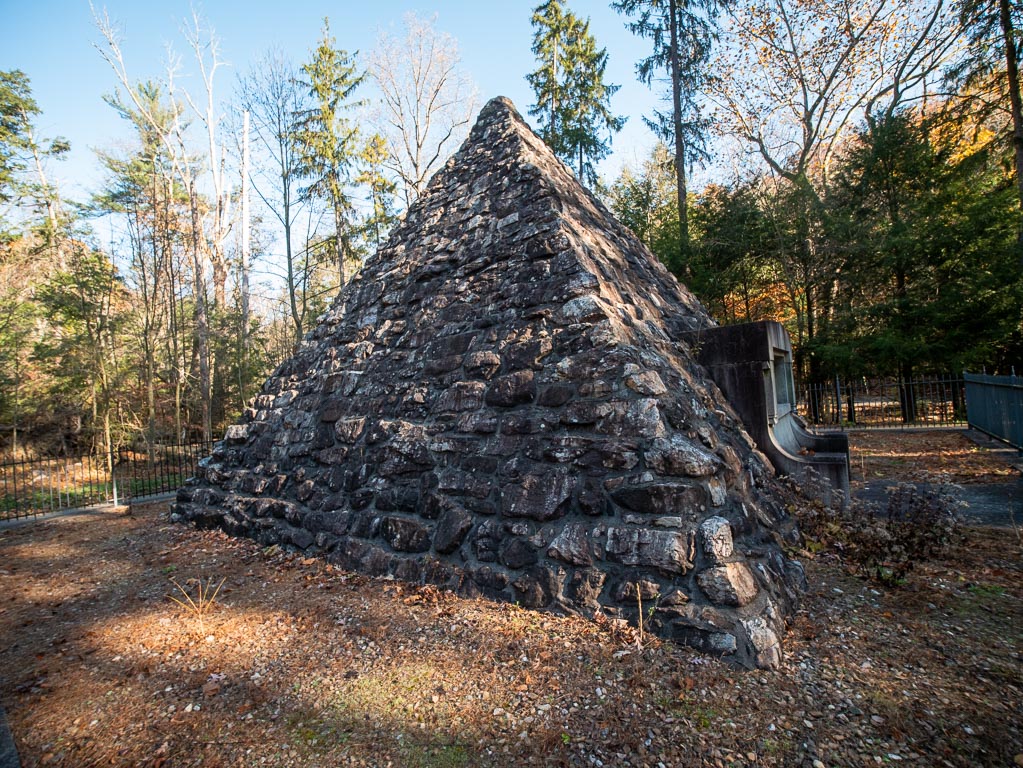
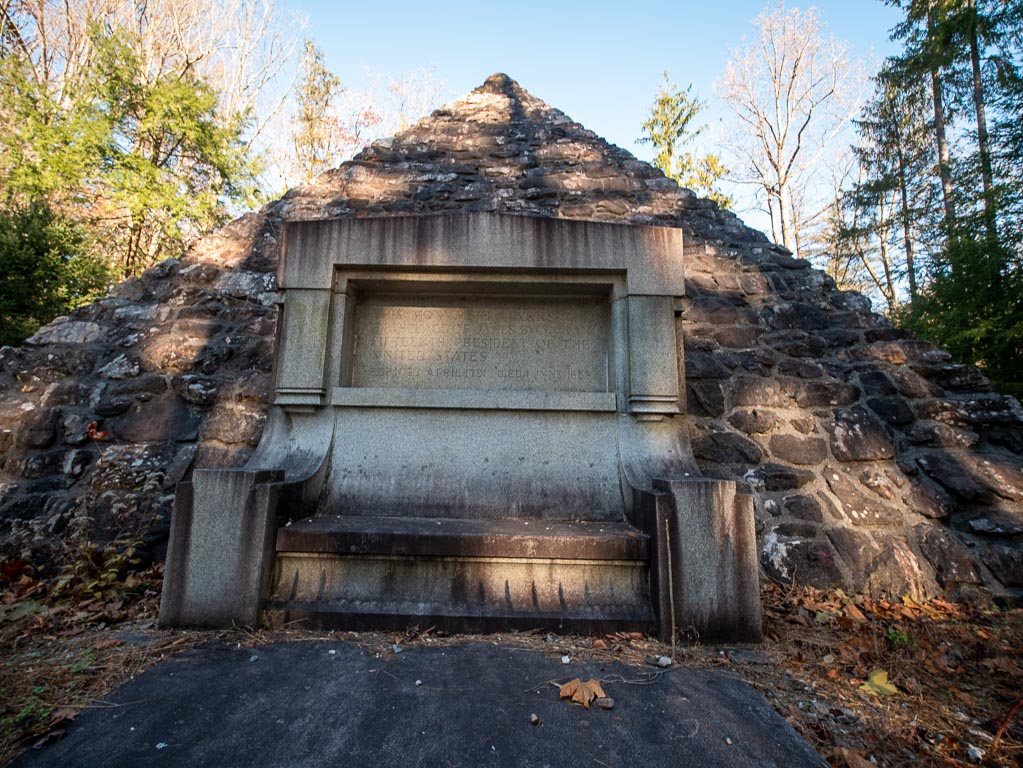
It’s a bit dingy, though it looks less like a Pennsylvania Turnpike rest area Roy Roger’s than I thought it would.
How did it get here?
James Buchanan’s niece Harriet Lane Johnson willed $100,000 to create the James Buchanan Monument Fund. She passed away in 1895, but it was several more years before the monument was created, in part, due to the fact that two of the four Monument Fund board members had also passed away.
Apparently, she suggested that the “monument be a huge rock or boulder in its natural state.”
Clearly, the monument isn’t this.
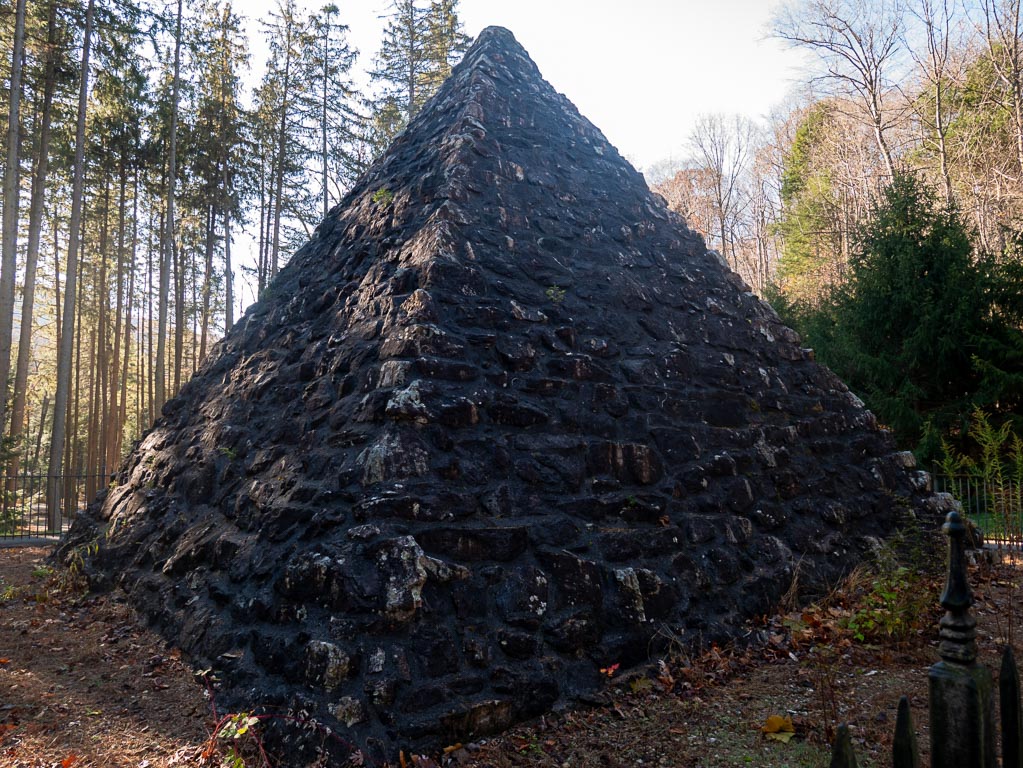
Clearly, the monument is a hideous symbol of the fact that like many other U.S. Presidents, James Buchanan was a member of the freemasons.
What do the placards of the State Park say about this?
“Why a boulder was not used for the monument is unknown. Perhaps the difficulty in moving such a large stone made it impractical.”
The monument is 30 feet high, and made out of granite, and “native rubble and mortar.” It was constructed in a month-and-a-half in 1907.
Why the iron bars?
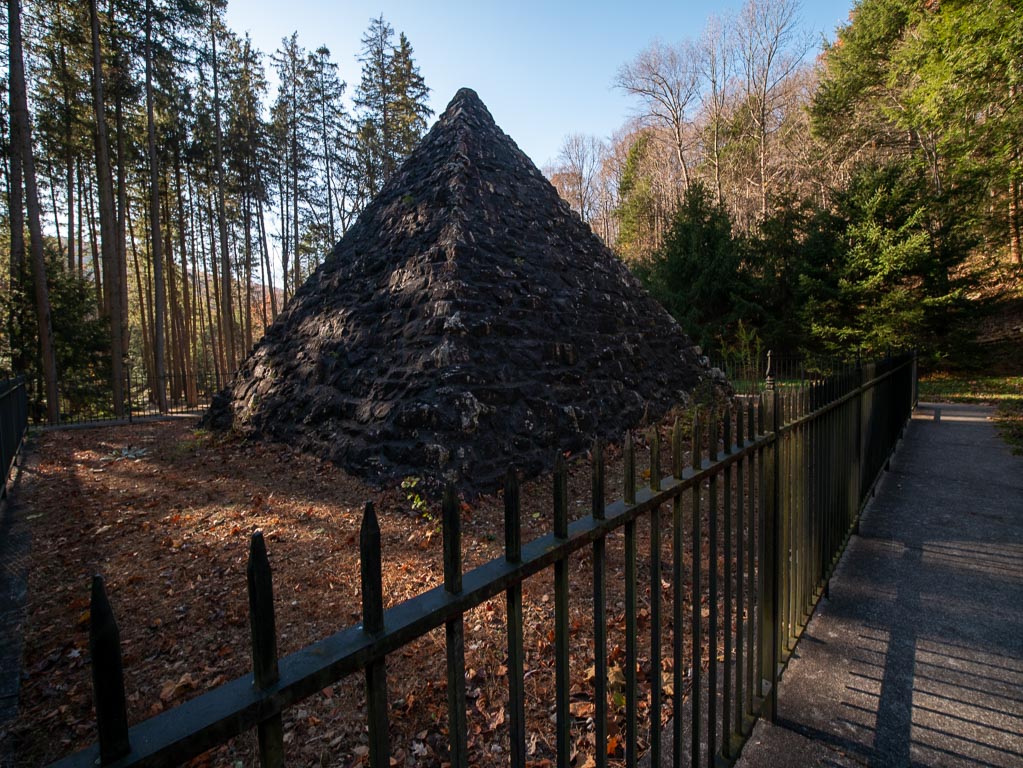
Quoth the placards: “The final instructions of the will for Stony Batter requested that the monument be enclosed in an iron railing for protection.”
Clearly, Harriet knew that her favorite uncle was not a popular figure.
The Park Today
The park today is unassuming, small, and unpopular. It’s home to two portapotties, many nice picnic tables, and the stream of Buck Run cuts through the park. (There are at least four streams officially named Buck Run in Pennsylvania – proof that our stream-namers may have been as narrow-minded and unimaginative as President Buchanan.)
There was no one there when I was visiting, other than one car that drove in, and seemed to turn around and leave without stopping.
The ‘history walk’ full of placards telling the sanitized and nice tale of Buchanan seem relatively new and well-maintained, but the inscription on the actual monument is very difficult to read.
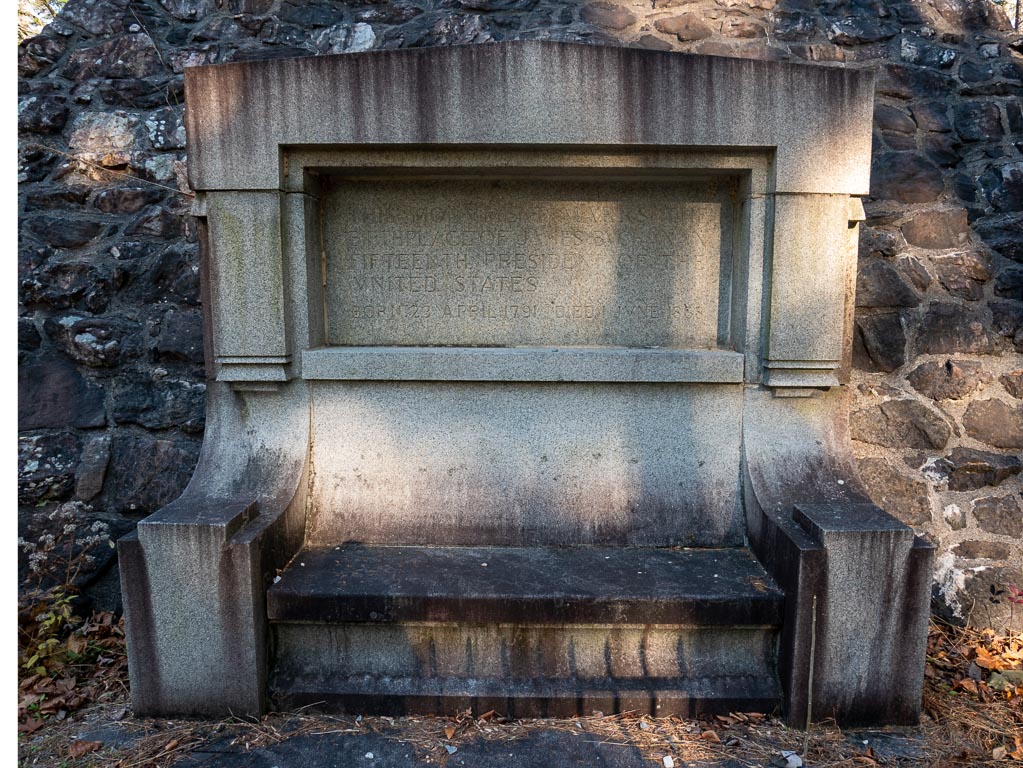
The iron bars are a bit imposing, perhaps unnecessarily so, because they would be easy enough to scale.
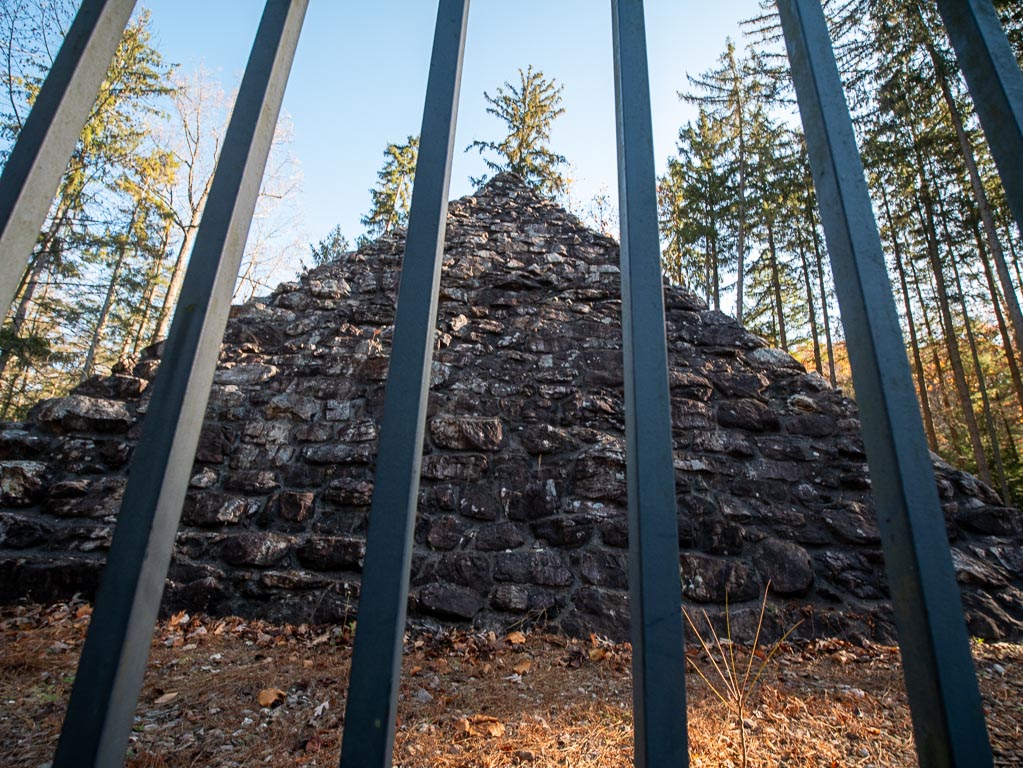
I imagine that just as few people care to visit the monument, few people care to vandalize it. (And I do not advocate such a thing.)
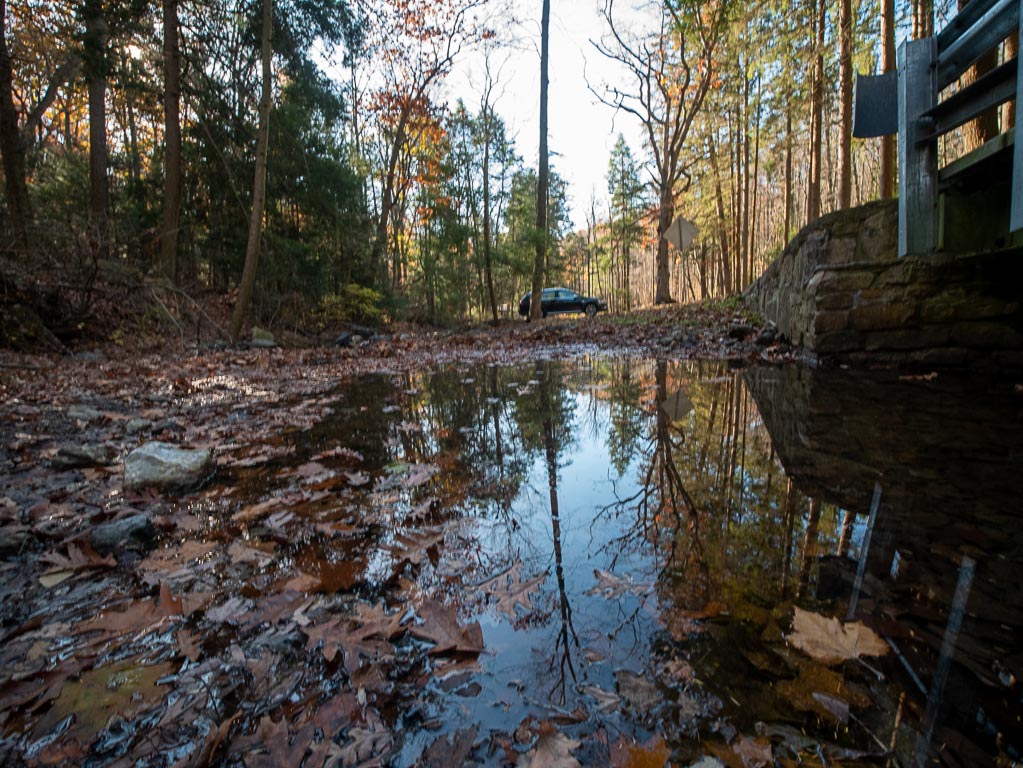
Citations
1 Here’s the park’s Buchanan text: “History of James Buchanan’s Birthplace State Park”
Otherwise, memories of history lectures, Wikipedia & Wikisource.
Otherwise, this post would have taken me slightly longer to write.
This post was part of a series:
Thanks for reading!
If you enjoyed this post, you might enjoy these 5 similar posts:
- 2024-04-30 —James Buchanan's Wheatland - Visiting the Monticello of America's Least Well-Remembered President
- 2021-12-03 —Return to Normalcy, or A Visit To The Warren G. Harding Home
- 2021-01-29 —755 Votes
- 2021-11-24 —The Buckeye State
- 2020-10-24 —Old Logger's Path
